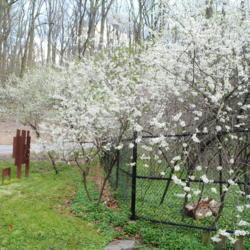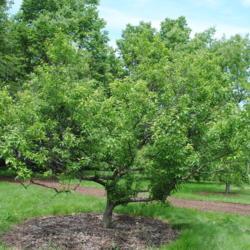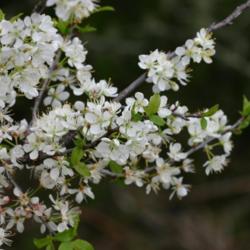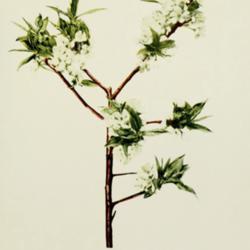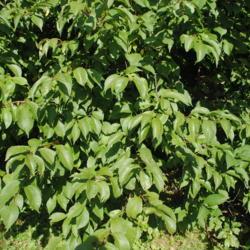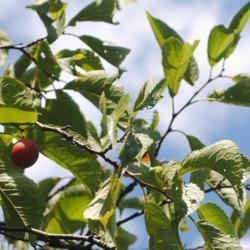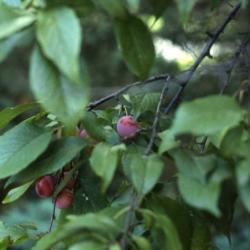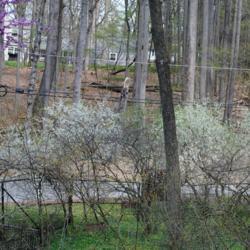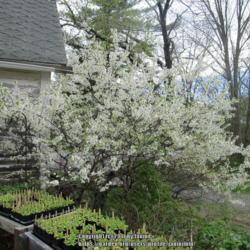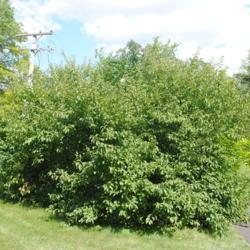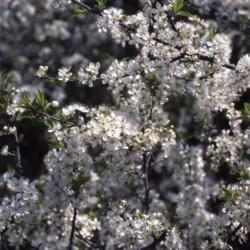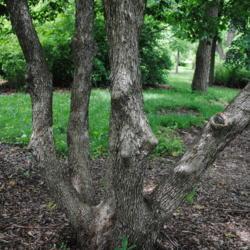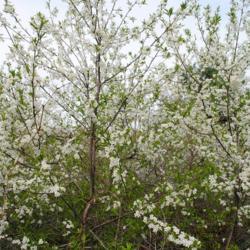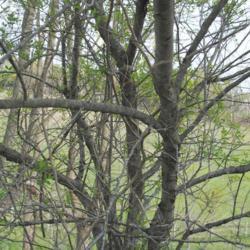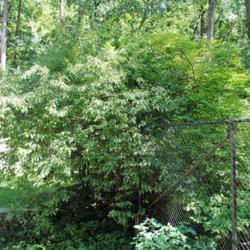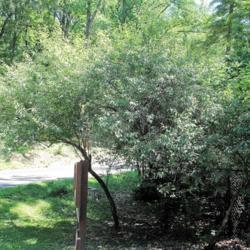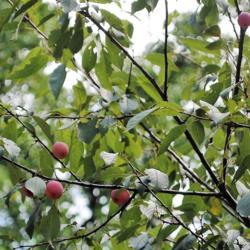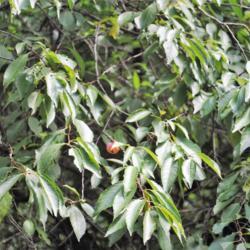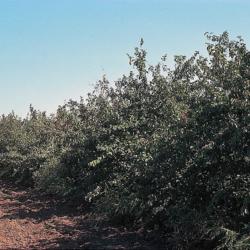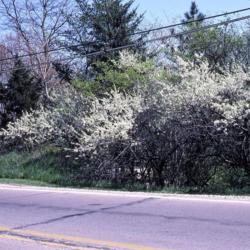General Plant Information (Edit)
| Plant Habit: |
Shrub
Tree
|
| Life cycle: |
Perennial
|
| Sun Requirements: |
Full Sun
Full Sun to Partial Shade
|
| Water Preferences: |
Mesic
|
| Soil pH Preferences: |
Slightly acid (6.1 – 6.5)
Neutral (6.6 – 7.3)
|
| Minimum cold hardiness: |
Zone 3 -40 °C (-40 °F) to -37.2 °C (-35)
|
| Maximum recommended zone: |
Zone 8b
|
| Plant Height: |
6 - 12 feet, to 20 -- 35 feet |
| Plant Spread: |
6 to 12 feet, to 20 to 30 feet |
| Leaves: |
Deciduous
|
| Fruit: |
Showy
Edible to birds
|
| Fruiting Time: |
Late summer or early fall
|
| Flowers: |
Showy
|
| Flower Color: |
White
|
| Bloom Size: |
Under 1"
|
| Flower Time: |
Spring
|
| Uses: |
Windbreak or Hedge
Dye production
Erosion control
Flowering Tree
Will Naturalize
|
| Edible Parts: |
Fruit
|
| Eating Methods: |
Raw
Cooked
|
| Wildlife Attractant: |
Bees
Birds
|
| Resistances: |
Drought tolerant
|
| Propagation: Seeds: |
Stratify seeds: 2 to 3 months at 40 degrees
|
| Pollinators: |
Flies
Bees
|
| Miscellaneous: |
With thorns/spines/prickles/teeth
Monoecious
|
- Wild Plum
- American plum
- Goose Plum
- Plum
Posted by
ILPARW (southeast Pennsylvania - Zone 6b) on Jan 22, 2018 3:48 PM concerning plant:
In the early 1950's three American Plums (or Wild Plums) were planted in a big bed close to the new modern house of my parents along with Pfitzer Junipers nearby, a Winged Euonymus, and a Bolleana White Poplar. The plum shrubs got about 10 feet high and inter-branched with each other. They produced delicious pink-orange round plums about 1 to 1.5 inches wide that we ate raw and my dad made plum liqueur from them. They lasted until about 2003 when new home owners redid the landscape. American Plum grows in various upland sites in a native range from southern New England down to northwest Florida to eastern Oklahoma, up the Great Plains to eastern Montana and all the Dakotas to southern Minnesota & Wisconsin, all Illinois & Indiana up into southern Michigan and the southern tip of Ontario. It grows 1.5 to 2.5 feet/year and lives 35 to 65 years. The doubly-toothed leaves get 2 to 4 inches long x 1.25 to 2 inches wide and develop a pale yellow fall color. It can be either a large shrub or small tree with stiff branching and some stiff sharp branch spurs. The white flowers in late April to mid-May emerge before leaves and have a strong sweet spicy smell. The delicious pink-orange plums mature in late July to August to early September, depending on latitude. It has shallow, fibrous roots and is easy to transplant. I don't know of any conventional nurseries that sell it anymore as in the 50's and 60's, but some native plant and mail order nurseries sell some. In nature it is just found in some occasional local sites.
« Add a new plant to the database
» Search the Plums Database: by characteristics or by cultivar name
« See the general plant entry for Plums (Prunus umbellata)
« The Plums Database Front Page
« The Plants Database Front Page
